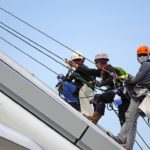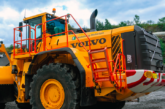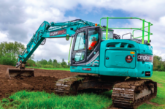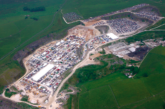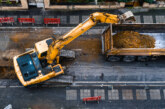Figures supplied to Heightsafe by four of the UK’s most high-profile public works projects demonstrate that a high proportion of health and safety incidents are related to Working at Height.
Data from four of the UK’s most high-profile public construction and maintenance projects has indicated that 11% of reported health and safety incidents are related to Working at Height. This snapshot provides insight into the levels of preventable accidents and incidents occurring on public works.
A Freedom of Information (FOI) request submitted by Heightsafe to HS2 Ltd, Sellafield Ltd, Highways England (motorway works M1-M6) and Network Rail (Crossrail) asked how many reported health and safety incidents had occurred across specific projects. Further, it asked what proportion of these incidents were related to Working at Height. The respondents shared details of RIDDOR, LTA and recordable incidents.
Of the 538 non-fatal, reported incidents across the four projects, 56 were as a result of Working at Height. There were no reported fatalities linked to Working at Height.

Ken Diable, Managing Director of Heightsafe commented on the findings: “The risk of Working at Height for construction and maintenance workers is known to be higher than those working in other sectors. In fact, falls from height accounted for the majority of fatal injuries to workers from 2013-18. We are relieved to see that respondents reported there were no deaths as a result of Working at Height on their projects. However, there were still over 50 incidents that in all likelihood could, and should have been prevented.”
Crossrail reports highest health and safety incidents
Of all respondents Network Rail’s Crossrail project reported the highest number of total incidents, and highest number related to Working at Height – 321 and 35 respectively.
Ken Diable commented: “As the largest construction project in Europe it is not surprising that Crossrail reported the highest incidents across the respondents. However this doesn’t mean the figures should be taken for granted.
“As such a high-profile public project Crossrail should strive to set standards and lead by example in ensuring the safety of workers, and ideally we’d like to see Working at Height incidents closer to zero. Almost all incidents related to Working at Height are preventable whether through meticulous planning, rigorous training, use of proper safety equipment. One accident as a result of Working at Height is too many for any project, no matter its size.”
The role of regulators in stopping poor Working at Height practices
In March 2019 Heightsafe called on the Health and Safety Executive to consider more stringent regulations to reduce the number of preventable deaths and injuries as a result of Working at Height. However, in its latest 2019/2020 business plan, the HSE makes no reference to tackling Britain’s biggest workplace killer.
Heightsafe will continue to offer free, no obligation advice on safe Working at Height for organisations, and appeal to regulators to consider new laws to tackle poor practice, including:
· Make Work at Height equipment a legal requirement on all new buildings and redevelopment projects – with a minimum standard set in building regulations
· RIDDOR statistics to be available and easily accessible online for businesses in high-risk industries such as construction, and agriculture, alongside a certification scheme from RIDDOR, providing proof of an organisation’s accident statistics
· HSE to continually monitor and report on the Health and Safety performance of contractors in high-risk industries, scoring these contractors against set metrics to aid in a proactive approach, rather than reactive in implementing Working at Height safety measures
· Tax relief for businesses actively investing in Work at Height equipment to protect their personnel, similar to the Land Remediation Relief currently available in the asbestos industry

